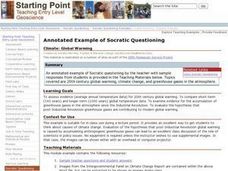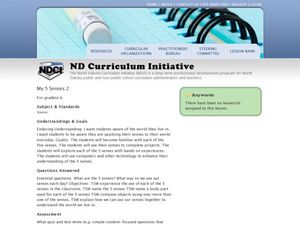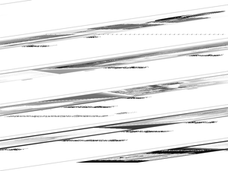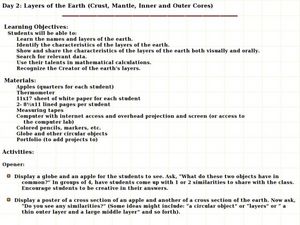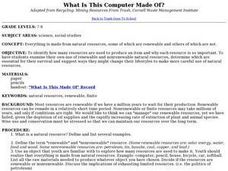Curated OER
Annotated Example of Socratic Questioning: Climate: Global Warming
Learners compare and discuss short-term and longer-term global temperature data. They evaluate data from three sets of graphs and then participate in a structured whole class Socratic discussion on the possible causes of climate change.
Curated OER
Global Warming: The Greenhouse Effect Debate
Students gather information about the Greenhouse Effect and participate in a debate about the merits of this theory on both sides. They explore the Greenhouse Effect, and its possible long-term effects, from a variety of resources.
Curated OER
What Is Your Explanation for the Evidence?
Young scholars encounter an interactive computer program activity designed as a diagnostic of student beliefs related to the theory of evolution. Students process the Hypercard cascades structured around a set of biological topics...
Curated OER
Oil Spill
Fourth graders watch a video about the types of products made from oil or oil used as energy to produce the product. In groups, they identify the positive and negative aspects of oil and participate in various activities. They use the...
Curated OER
Birds of a Feather Flock to the Web
Pupils define the term "evolution" and relate it to species adaptation, supporting their ideas with examples. They locate, correctly cite, and briefly review two Web sites with information on finches commonly found in their state or count
Curated OER
Oxidation and Combustion: Chemical Reactions in Fire
Students investigate the art and science of pyrotechnics. In this chemistry and computer lesson, students learn about the chemical basis of fire and structure of fireworks. Students then apply their knowledge in...
Curated OER
Fish Hunt
Students prepare for a unit on aquarium maintenance by naming all the different kinds of fish they have seen either in aquariums, at home, or in the community. They use classroom computers to email other classrooms around the world for...
Curated OER
My Five Senses 2
Students investigate the five senses. In this five senses activity, students answer essential questions about the use of the five senses as they interact with their environment. They use a computer software program to make a concept web...
Curated OER
Magnetism
Students explore physical science by participating in a class science activity. In this magnet attribute lesson plan, students define a list of scientific vocabulary terms associated with magnets and participate in hands on magnet...
Alabama Learning Exchange
Diverse Life Forms of the Ocean
Pupils recognize marine organisms and differentiate between plankton and nekton. In this investigative instructional activity students create a concept map using their list of terms and study marine life forms.
Curated OER
The Chemosynthetic Cafe
Students study photosynthesis and chemosynthesis. In this chemosynthetic lesson students explain the processes of these and define terms.
Curated OER
Agriculture Scavenger Hunt
In this science worksheet, students find the words that are related to the finding of terms and information about agriculture for ten questions. The answers are on page 3.
Curated OER
Layers of the Earth (Crust, Mantle, Inner and Outer Cores)
Learners study the layers of the Earth. In this Earth's crust instructional activity students complete an activity, divide into groups and diagram and define given terms.
Curated OER
How Green Are You?
Students investigate environmental care by listing ways they preserve the Earth each day. For this green living habits lesson, students collaborate in groups to brainstorm ways they can "be green" more often in their communities....
Curated OER
HISTORICAL AND SOCIAL SCIENCES ANALYSIS
Students examine a variety of maps and documents to identify physical and cultural features of neighborhoods, cities, states, and countries, to explain the historical migration of people, expansion and disintegration of empires, and the...
Curated OER
Using Computers for Statistical Analysis of Weather
High schoolers use temperature, cloud cover and other weather data from the S'COOL website to statistically analyze weather around the country. They use computers to calculate and graph standard deviations, means and modes of the...
Curated OER
Understanding Cells
Students identify and define several related vocabulary terms. Students complete a short lab and complete the questions. Students create a cell crossword puzzle and play cell computer games through the included links.
Curated OER
What Is This Computer Made Of?
Learners identify how many resources are used to produce an item and why each resource is so important. They examine their own use of renewable and nonrenewable natural resources.
Curated OER
Science: Trouble in the Troposphere
Students research a NASA Website and record information about an assigned city's tropospheric ozone residual monthly climate. In groups, they graph the information for the past year. They form new groups and compare their city's...
Curated OER
Climate Change in My City
Students investigate the climate changes occurring locally, regionally and globally over the last one hundred years. They brainstorm and predict whether the current year's weather was warmer or colder than last year then check the...
Safe Drinking Water Foundation
Making a Difference
After learning about the effects of water pollution, your class will discuss ways to make people in their community aware of the importance of water conservation. Then, your young environmentalists will write a letter to the local...
Cornell University
Sound Off!
Time to witness the effects of sound. Learners analyze different materials to determine their abilities to absorb sound waves. They use free software to monitor the amplitude of the waves to verify results.
California Academy of Science
Rapid Brainstorming: How Can We Improve Our Global Food System?
In 2018, the average fast food burger cost $2.64 while a salad averaged $4.14. Does the price difference matter to public health? Scholars consider that question and others in a brainstorming session about improving our global food...
Teach Engineering
Biomes and Population Dynamics - Balance Within Natural Systems
How large can a population become? The fifth installment of a nine-part unit teaches young ecologists about limiting factors that determine the carrying capacity of species in the Sonoran Desert. Here is a PowerPoint to help present this...
